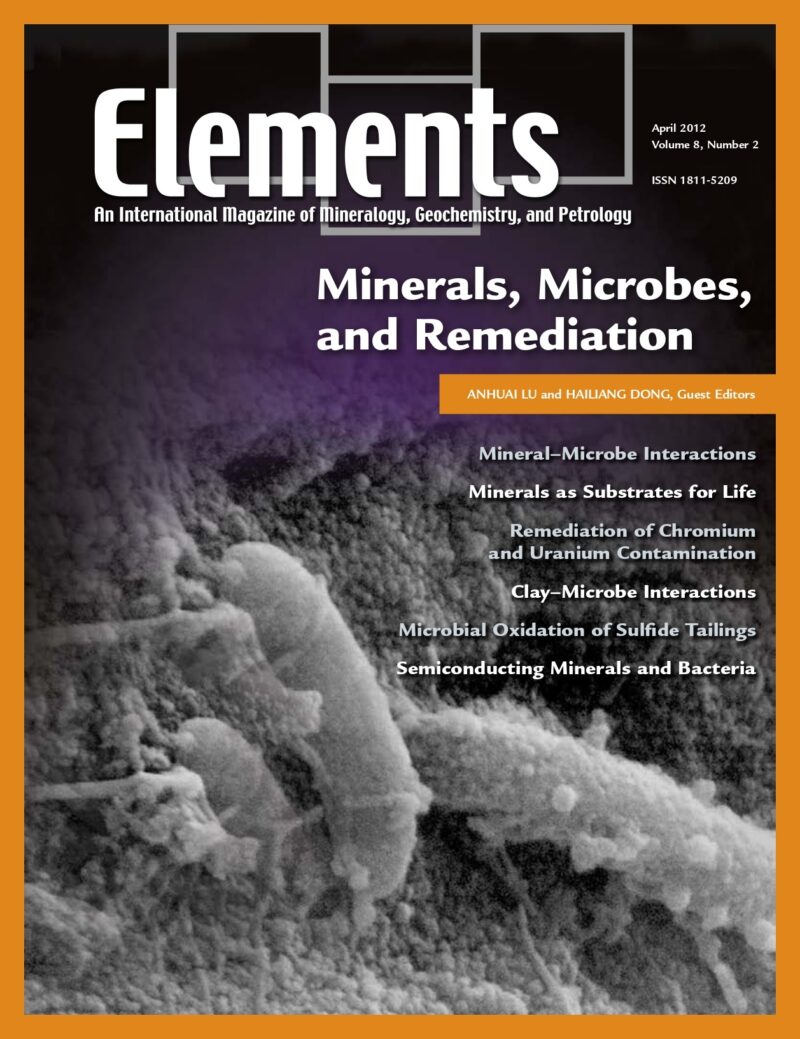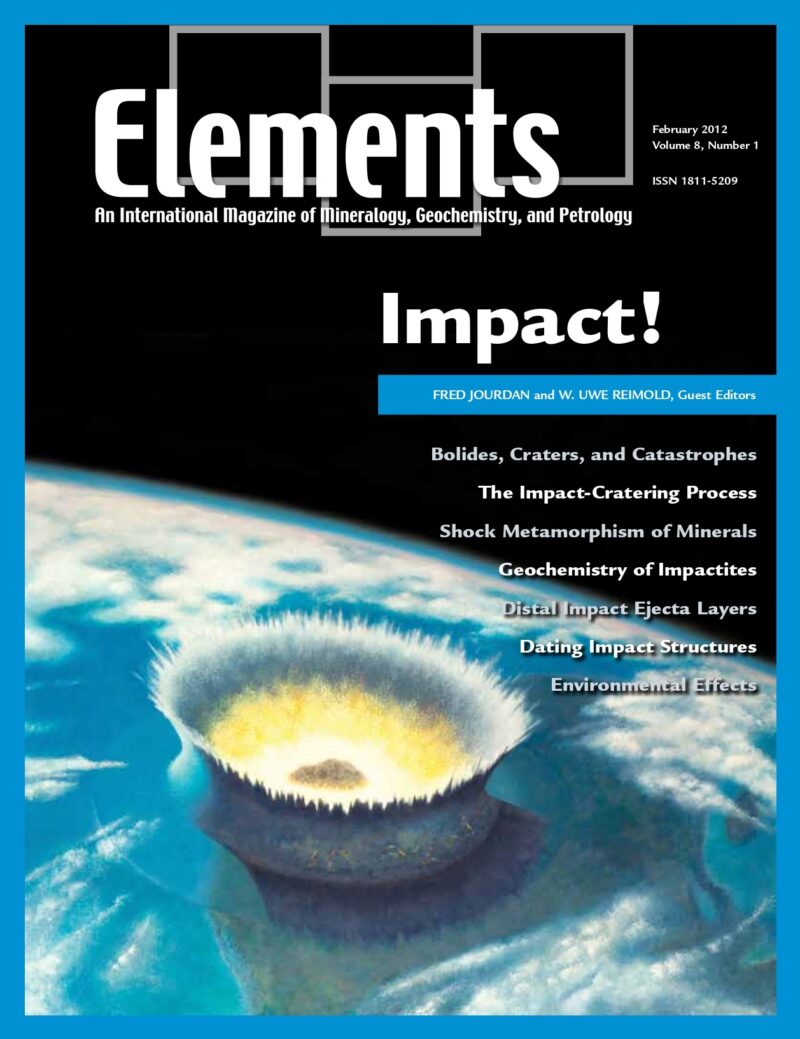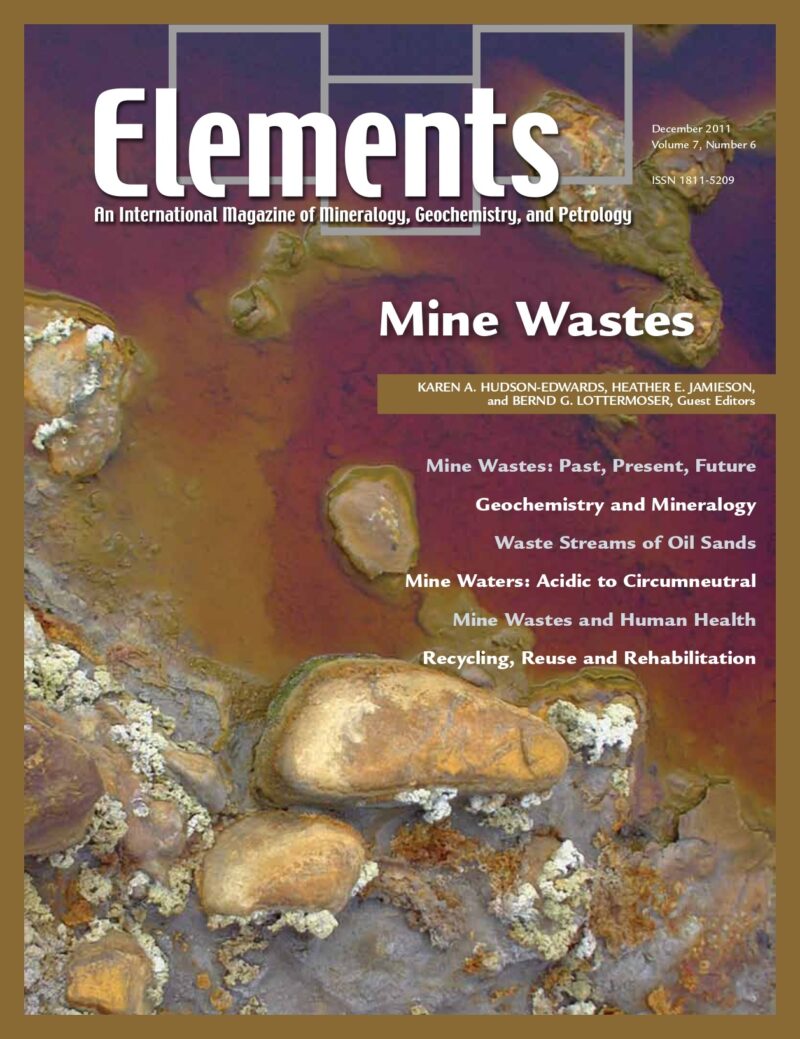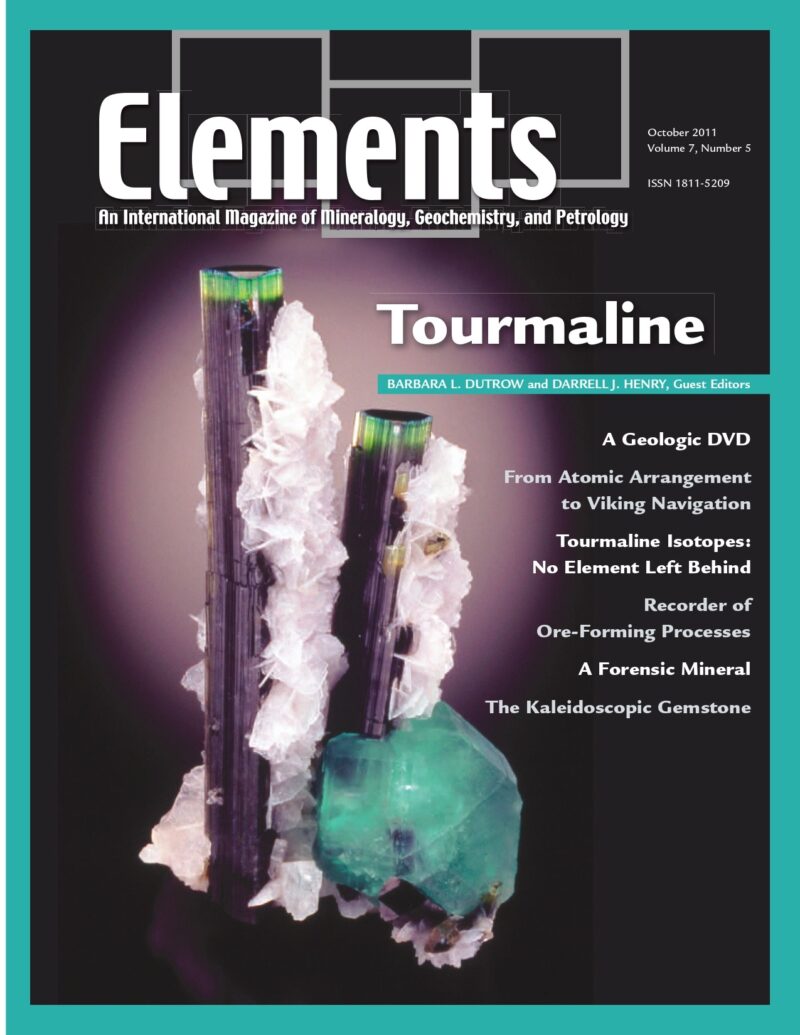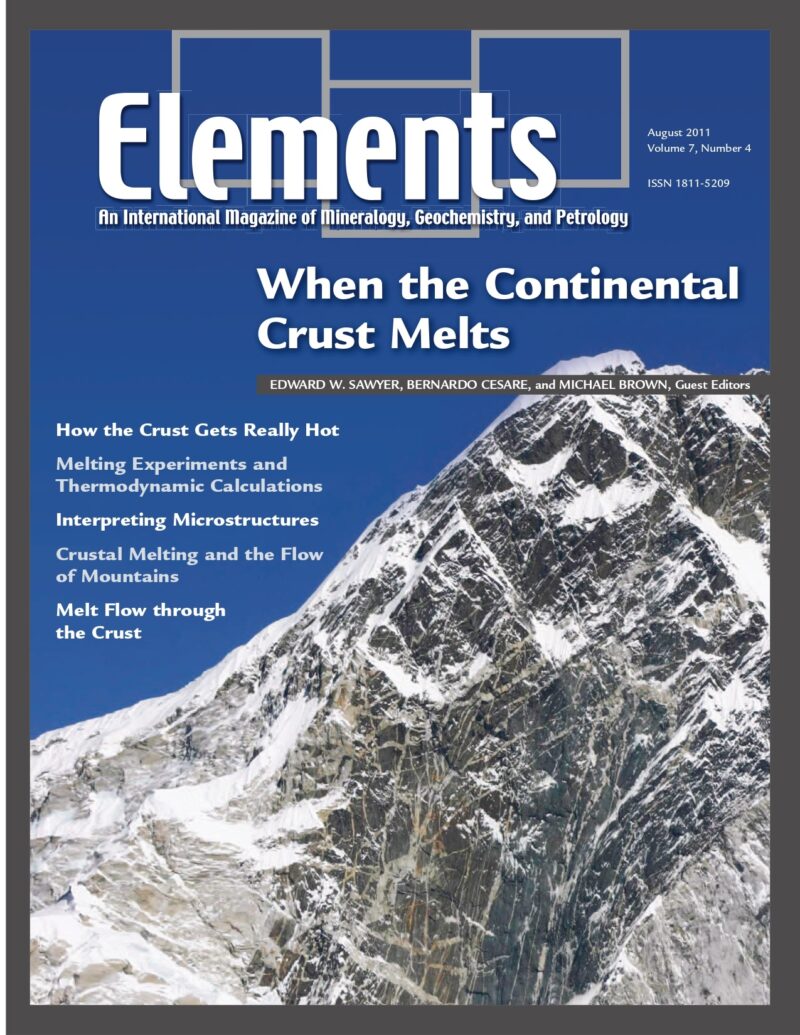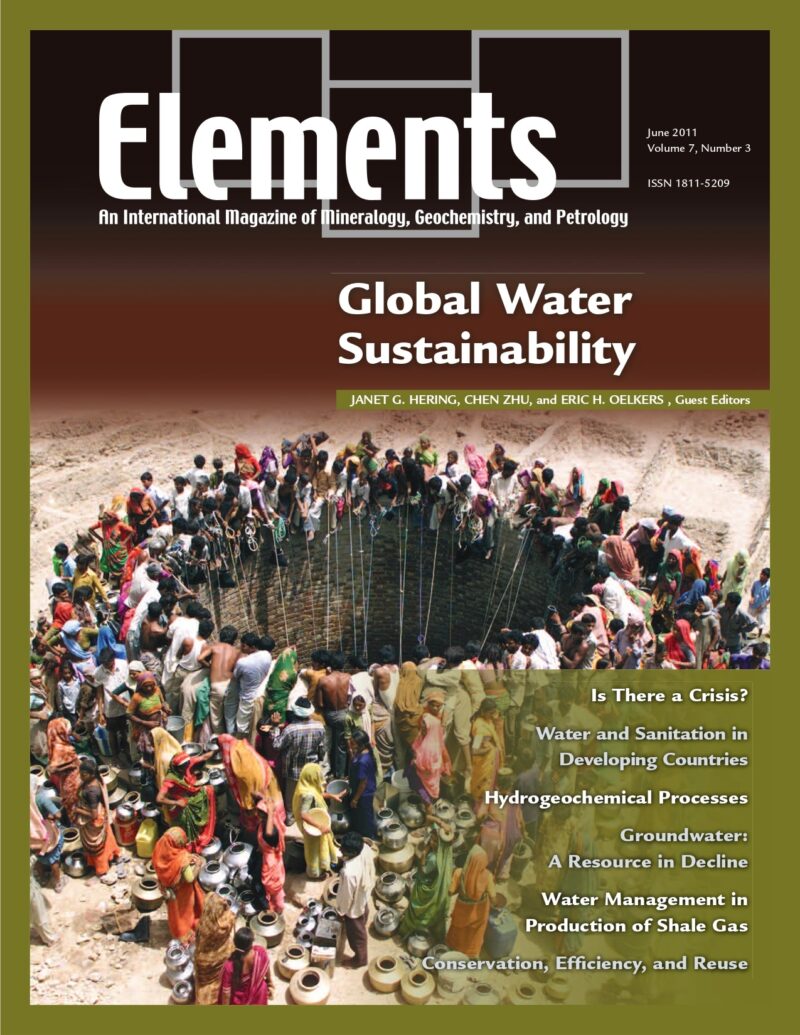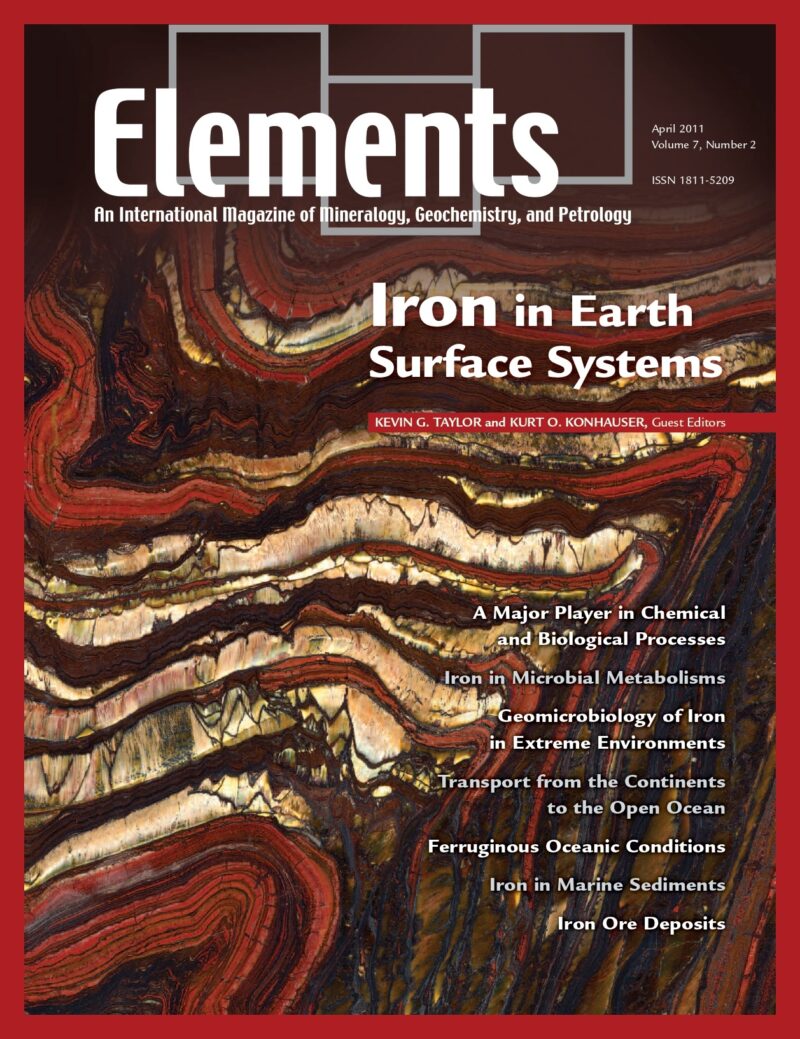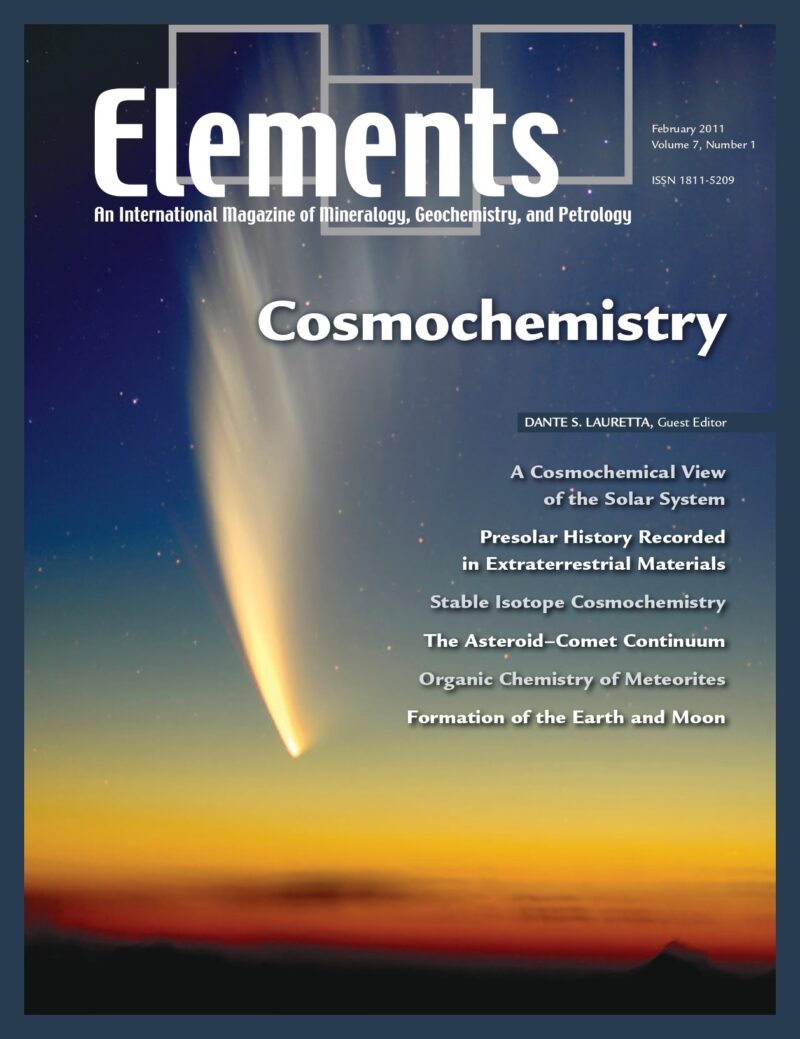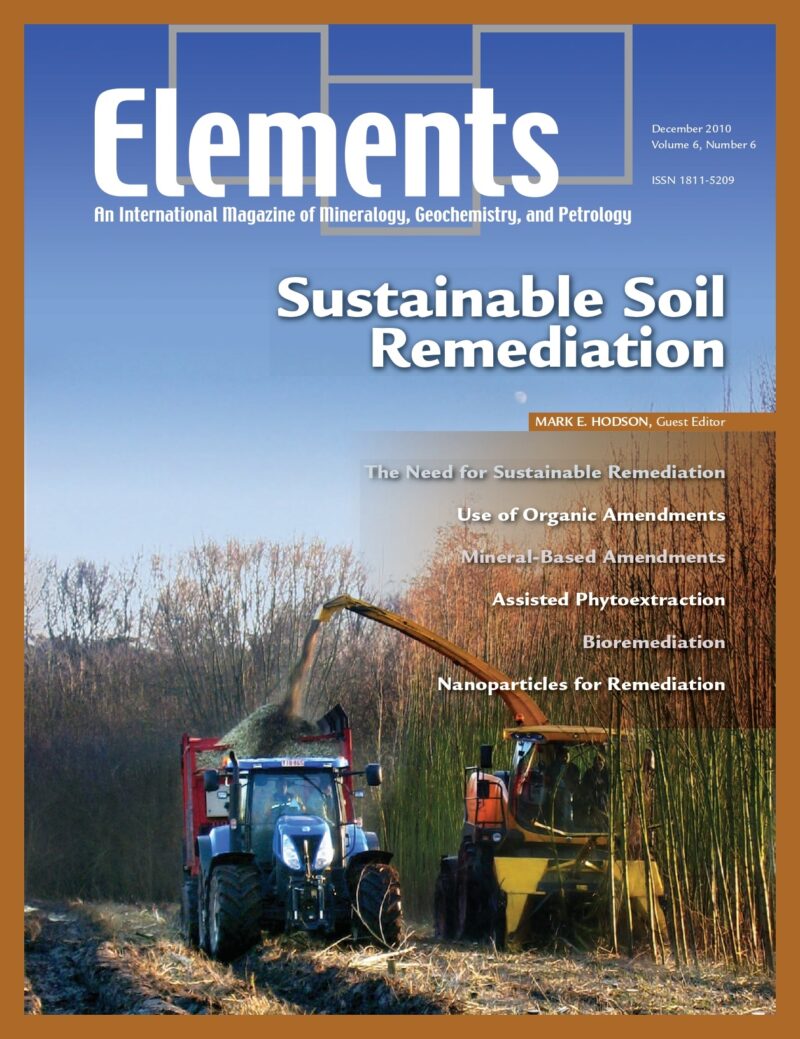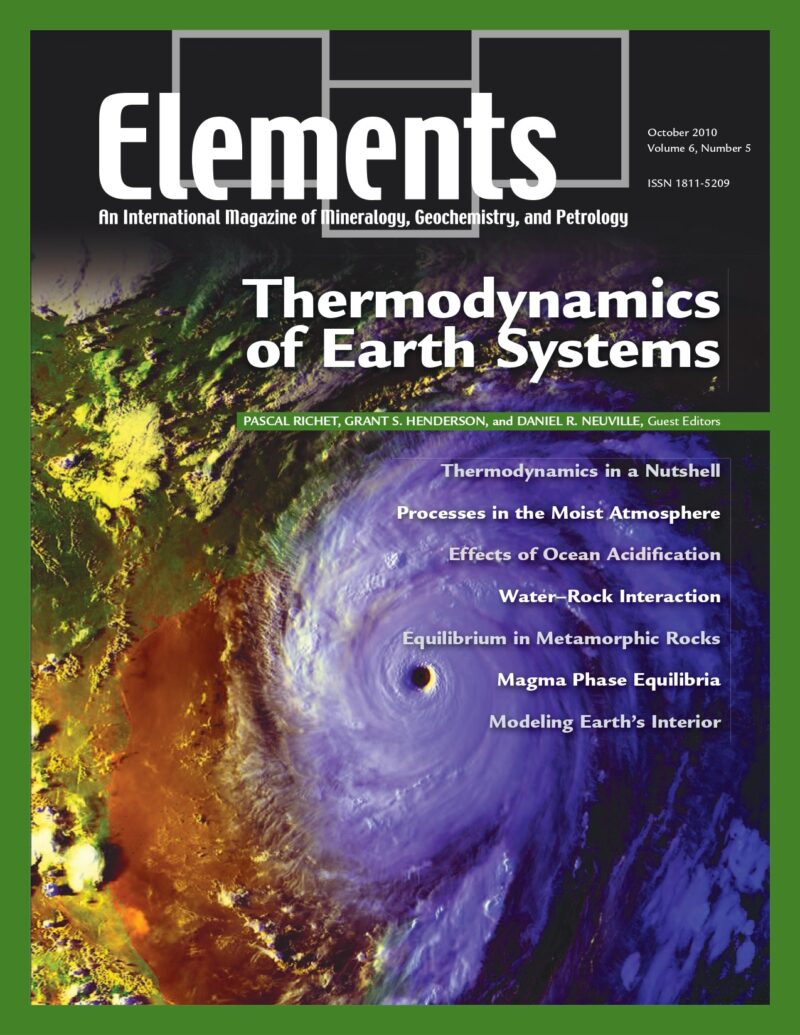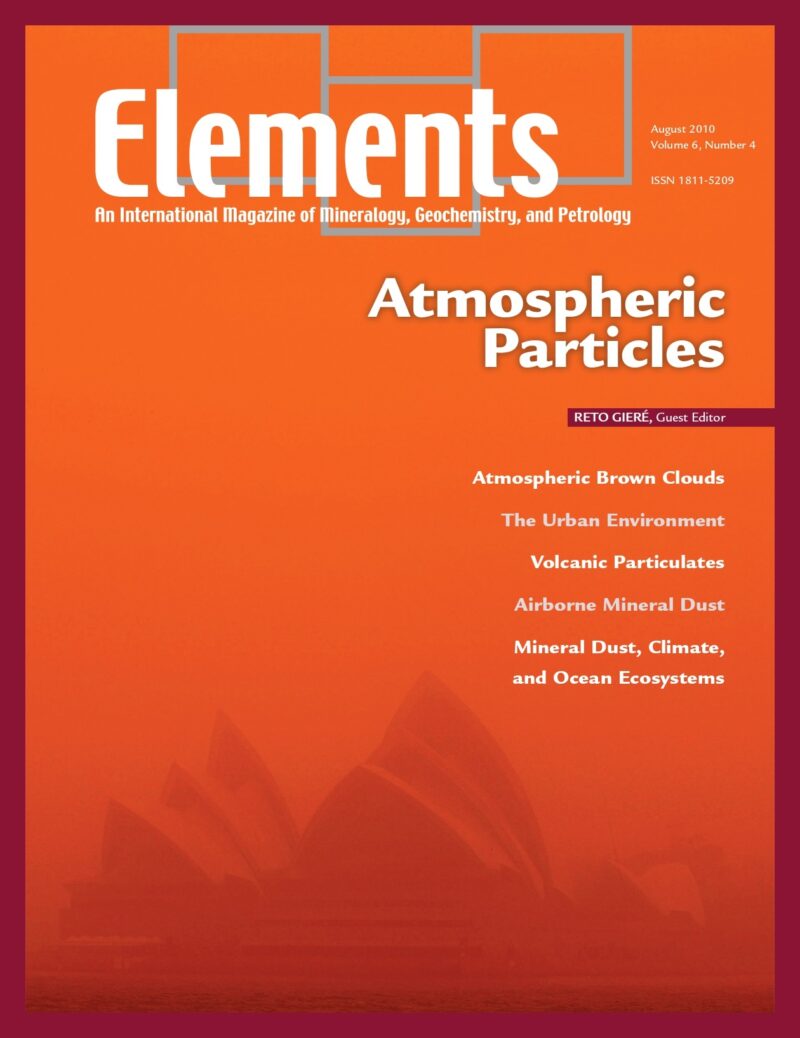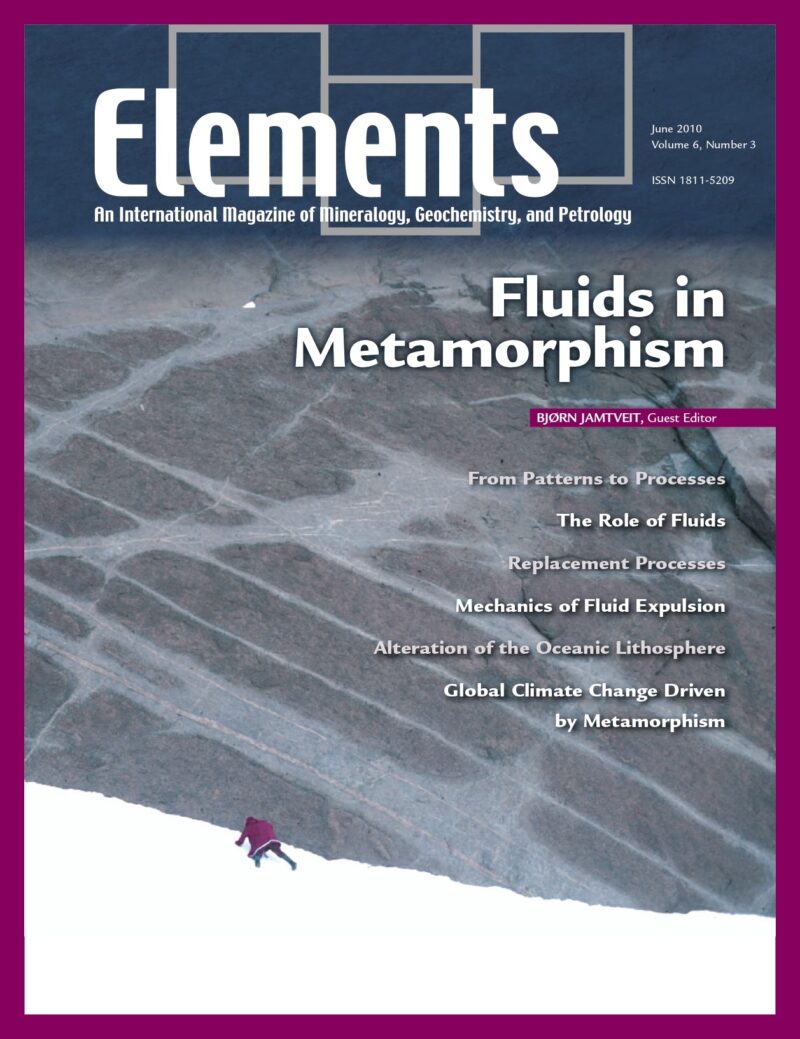-
Minerals, Microbes, And Remediation, April 2012, Vol. 8, No. 2
$20.00Studies of mineral–microbe interactions lie at the heart of the emerging field of geomicrobiology, because minerals are the fundamental Earth materials with which microbes interact. Microbes are found in a number of the Earth’s extreme environments and also in extraterrestrial materials.
-
Impact!, February 2012, Vol. 8, No. 1
$20.00Impact processes are central to the formation and evolution of the Solar System and the modification of planetary surfaces. On Earth, asteroid impacts played a critical role during Earth history; they delivered the constituents of our planet, were responsible for the formation of major ore deposits, and affected life on Earth.
-
Mine Wastes, December 2011, Vol. 7, No. 6
$20.00Since the dawn of civilization, humankind has been extracting metals and minerals for the production of goods, energy, and building materials. These mining activities have created great wealth, but they have also produced colossal quantities of solid and liquid wastes, known collectively as “mine wastes.
-
Tourmaline, October 2011, Vol. 7, No. 5
$20.00From the Vikings’ sunstone to a modern piezometric pressure sensor, tourmaline is an intriguing mineral with a new degree of significance. Tourmaline was considered by 18th century physicists as the key to a grand unification theory relating heat, electricity, and magnetism, but new studies define its role as an indicator of Earth’s processes.
-
When The Continental Crust Melts, August 2011, Vol. 7, No. 4
$20.00Partial melting is the most important process affecting the continental crust. It is responsible for the large-scale compositional and density structure that has stabilized the crust over geological time.
-
Global Water Sustainability, June 2011, Vol. 7, No. 3
$20.00The term water resources refers to natural waters (vapor, liquid, or solid) that occur on the Earth and that are of potential use to humans. These resources include oceans, rivers, lakes, groundwater, and glaciers.
-
Iron In Earth Surface Systems, April 2011, Vol. 7, No. 2
$20.00Iron is the fourth most abundant element at the Earth’s surface. As an essential nutrient and electron source/sink for the growth of microbial organisms, it is metabolically cycled between reduced and oxidized chemical forms.
-
Cosmochemistry, February 2011, Vol. 7, No. 1
$20.00Cosmochemistry is the study of extraterrestrial materials aimed at understanding the nature of Solar System bodies, including the planets, their natural satellites, and small bodies. An important goal is to increase our understanding of the chemical origin of the Solar System and the processes by which its planets and small bodies have evolved to their present states.
-
Sustainable Remediation Of Soils, December 2010, Vol. 6, No. 6
$20.00Humanity requires healthy soil in order to flourish. Soil is central to food production, regulation of greenhouse gases, and provision of amenity.
-
Thermodynamics Of Earth Systems, October 2010, Vol. 6, No. 5
$20.00During the past decades, thermodynamics has become an essential tool for understanding fundamental processes that have determined the structure and evolution of our planet. From the atmosphere to the ocean and sediments, from metamorphic terranes to magmatic provinces, the lower mantle, and the core, this issue of Elements illustrates how a better understanding of the manner in which free energy depends on temperature, pressure, and chemical composition allows the Earth’s activity to be better deciphered.
-
Atmospheric Particles, August 2010, Vol. 6, No. 4
$20.00Solid atmospheric particles range in size from a few nanometers to several micrometers and are generated through both natural processes and human activity. Even though these particles are derived from spatially limited source areas and typically become airborne during short-term events, they are ubiquitous globally due to atmospheric circulation.
-
Fluids In Metamorphism, June 2010, Vol. 6, No. 3
$20.00Fluids play a critical role during metamorphic processes. They have first-order influence on both reaction kinetics and mass transfer, and thus also on the rate of metamorphism.

